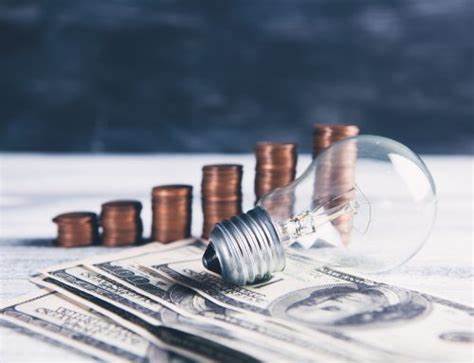Electricity is one of the perks of modern times we enjoy every day. It “spoiled” us, so it’s hard for people to imagine how their ancestors lived before the first light bulb was lit almost two centuries ago. Without this resource, the world would probably stop for a while, as we need it for everything, from daily stuff to industry and production.
Households in Norway use electricity that has a rather high price per kilowatt hour, as seen in this source. The market of energy sources and electrical suppliers in this country is very developed, so consumers don’t have to stick to a single provider. In fact, you can do your research and choose the best or most affordable provider for your needs.
However, the matter is not so simple. Certainly, a competitive market offers benefits for end consumers in terms of better prices and deals. But the decision on the electrical provider isn’t easy, so don’t make it recklessly. Quite often, seemingly cheap deals turn out to be much more expensive. That’s why it’s good to know some things before committing to any energy supplier in Norway.
Understand Your Bill
If you’ve just moved to Norway, you’re probably surprised that every house has an electricity meter. It’s a device that measures energy usage at every moment and sends these reports to the competent provider, who then forwards them to the main suppliers. This information is critical to adjust the electricity prices and supply to the demand. That’s why kWh rates in this country change almost every hour.
So, you can be charged differently for every hour. Of course, that doesn’t mean you’ll get a mile-long bill every month. Electricity providers calculate the average monthly price based on all those kWh rates and charge you for the monthly consumption at that rate. Other costs included in your bill are companies’ fees, taxes, and so-called supplements (for the suppliers’ profit).
The energy bill in Norway has two components. These are the price you pay for the electricity you use and the price you pay for the service of its distribution to your home. The latter is mostly related to your location, so you can’t do much in choosing a grid company. As for the electricity supplier, you have a choice.
What Options You Have
Electricity is one of the perks of modern times we enjoy every day. It “spoiled” us, so it’s hard for people to imagine how their ancestors lived before the first light bulb was lit almost two centuries ago. Without this resource, the world would probably stop for a while, as we need it for everything, from daily stuff to industry and production.
Households in Norway use electricity that has a rather high price per kilowatt hour, as seen in this source. The market of energy sources and electrical suppliers in this country is very developed, so consumers don’t have to stick to a single provider. In fact, you can do your research and choose the best or most affordable provider for your needs.
However, the matter is not so simple. Certainly, a competitive market offers benefits for end consumers in terms of better prices and deals. But the decision on the electrical provider isn’t easy, so don’t make it recklessly. Quite often, seemingly cheap deals turn out to be much more expensive. That’s why it’s good to know some things before committing to any energy supplier in Norway.
Understand Your Bill
If you’ve just moved to Norway, you’re probably surprised that every house has an electricity meter. It’s a device that measures energy usage at every moment and sends these reports to the competent provider, who then forwards them to the main suppliers. This information is critical to adjust the electricity prices and supply to the demand. That’s why kWh rates in this country change almost every hour.
So, you can be charged differently for every hour. Of course, that doesn’t mean you’ll get a mile-long bill every month. Electricity providers calculate the average monthly price based on all those kWh rates and charge you for the monthly consumption at that rate. Other costs included in your bill are companies’ fees, taxes, and so-called supplements (for the suppliers’ profit).
The energy bill in Norway has two components. These are the price you pay for the electricity you use and the price you pay for the service of its distribution to your home. The latter is mostly related to your location, so you can’t do much in choosing a grid company. As for the electricity supplier, you have a choice.
What Options You Have
As seen on https://bestestrøm.no/strømleverandører/, several dozen providers operate in the Norwegian electricity market (so far). Some of these companies generate their own power and sell it to consumers, while others are only “resellers.” They purchase electricity from the wholesale market and simply “direct” it to end users. In both cases, you get the same quality of energy.
Choosing an electrical provider means a lot when you’re looking for cheaper tariffs or you’re just not happy with the current service. Depending on your energy needs, these companies have designed different arrangements that you can sign for one, two, or three years. They differ only in calculating the price of consumed energy, so these contracts can be fixed, variable, and spot.
Fixed Contract
“Fixed” means security, and that’s the case with the kWh rate. A fixed contract holds the price and terms regardless of market trends, changes in demand, weather conditions, and geopolitical events. With that in mind, this arrangement with the electricity provider gives you certainty and the possibility to plan your budget for a given period.
Of course, predictability doesn’t always mean you’ll get the lowest kWh rate. When you sign this contract, you “lock in” it at the price valid on that day for the entire contract length. But since many factors affect the electricity rate, it fluctuates quite often. So it may happen that the kWh rate drops shortly after signing the contract. That favors those with variable arrangements while you pay a higher price.
But, in case the opposite happens (which is a more likely scenario), you are spared sudden bill increases. This type of contract suits people who live in rental properties, plan to sell their house soon, or simply want to change electricity providers more often, following the electricity market and kWh rate.
Variable Contract
Most households in Norway opt for shorter-term (up to two years) arrangements with electrical providers that offer variable tariffs. These companies index the electricity rate every month during the duration of your contract, and they differ every month (due to the already mentioned fluctuations in the power rate on the wholesale market).
A variable rate is close to a spot price, but it changes less frequently. Suppliers leave consumers a notice period of two weeks to “warn” them of electricity price decrease or increase. This delay is necessary since market electricity rates can change frequently, and it can be impossible for end-consumers to follow them.
This contract has good and bad sides, and when you look at them, you will know if something like this suits you. Unlike fixed arrangements, this contract reflects the real situation in the market. If some positive changes affect the lowering of fuel prices, you can benefit from them in the form of a lower kWh rate. But if the opposite happens, you may be in for an unpleasant surprise on your next electricity bill.
Spot Contract
The spot price is the price your provider pays when purchasing electricity on the wholesale market. Since it’s calculated daily, it can vary during different times of the day, week, or season. Generally, the kWh rate is higher during the winter and on weekdays in the morning and evening. In other periods it is lower than the fixed or variable rates. Also, keep in mind that the spot price may vary depending on the demand, as well as your location.
Spot contracts often confuse people, especially due to frequent price changes, but the truth is that these arrangements have proven to be the best option for households with low or medium consumption, especially in the long term. However, there’s a certain factor of uncertainty that can be a disadvantage of this arrangement.
Namely, as the spot price of kWh depends exclusively on the electricity price market (which is triggered by many factors), no one can know with certainty how these prices will move. In fact, sometimes you can see significant price fluctuations on your bill from month to month.
How to Cut Your Electricity Bill in Norway
A smart choice of provider and contract type can save you a lot of money on electricity bills. But you can do several other things to cut power consumption. Simple tips like cooking with closed pots or using the dishwasher and washing machine only when full bring extra savings.
If you’re thinking long term, invest in appliances with a higher energy rating, as they’re more energy efficient. Seal your windows and doors well, as a lot of energy escapes through holes and cracks you don’t even know exist. LED bulbs are also a good way to lower power consumption.
Thorough research on electricity providers and contract types benefits your wallet and the environment. With a growing number of providers in Norway offering innovative solutions, you have the power to make a positive impact on the planet while enjoying reliable and affordable electricity services.





















